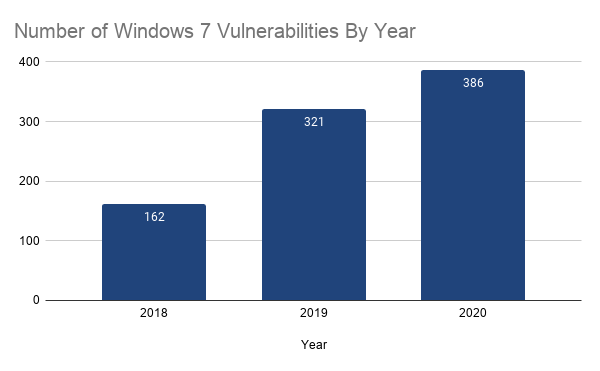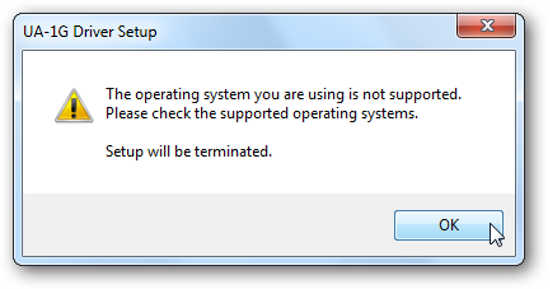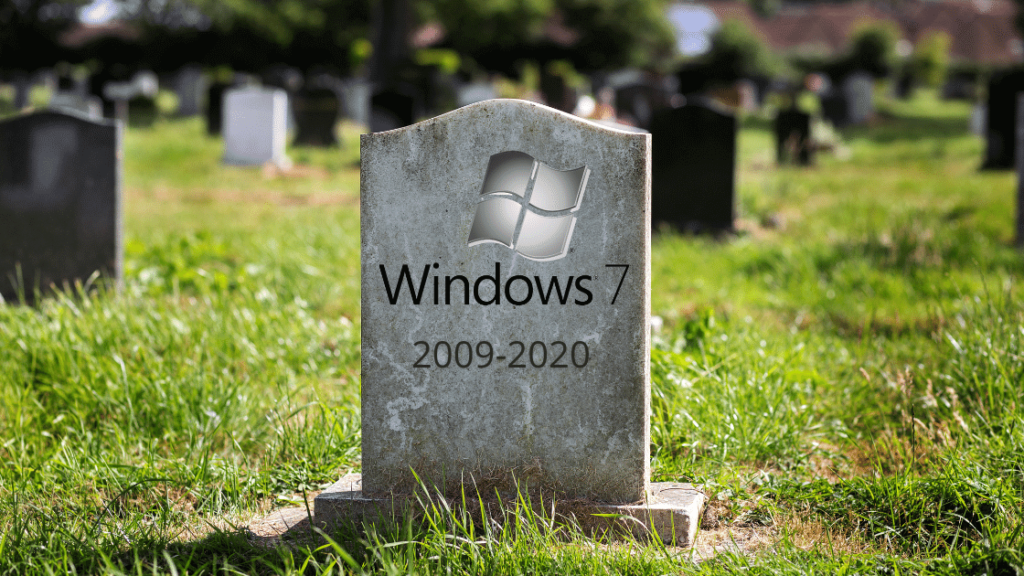Microsoft discontinued support of Windows 7 over a year ago—on January 14, 2020. As a result, Microsoft no longer produces any patches or updates to address known or newly discovered issues for the Windows 7 platform.

This potentially exposes users of devices with the Windows 7 operating system to vulnerabilities that could be exploited by threat actors—exploits, bugs, viruses, and ransomware.
While the company has encouraged businesses and consumers to upgrade to Windows 10 to keep their PCs and laptops secure, an estimated 200 million devices were still running the out-of-date OS at the beginning of 2020.
Here are some of the reasons it’s time for any business to plan upgrading soon.
Windows 7 computers are a bigger security risk than ever
Your Windows 7 computers will keep working, but Microsoft will not provide security updates or or technical support for any issues. This leaves your computers at greater risk from viruses and malware that may be circulating to take advantage of flaws that are later discovered.
The door has been left open. Here is a list of the top 10 Windows 7 vulnerabilities.
The number of security vulnerabilities reported in Windows have skyrocketed. Hackers have welcomed this opportunity.

Some programs just won’t run on a Windows 7 computer
Do you want to use Office 365, Teams and OneDrive?
We recently received a call from a customer who was having trouble installing Office 365. Our technicians forwarded the error to Microsoft for assistance. When it was disclosed that the computer was running Windows 7, they responded with a link to this article, which basically says “no dice.”
Your new monitor may not work
If you are considering adding a second monitor or new printer, think twice with Windows 7.

Most hardware devices require a Windows driver to function. Many of today’s manufacturers are not building drivers for old Windows 7 computers. So you might find yourself out of luck.


